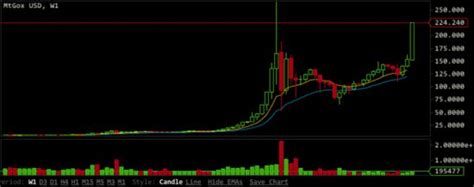Title: An Analysis of Bitcoin Hash Rate Trends
Bitcoin's hash rate, a measure of the computational power dedicated to mining and processing transactions on the Bitcoin network, is a crucial indicator of its security and network health. Understanding the trends in Bitcoin hash rate can provide insights into the network's growth, miner activity, and potential implications for investors and stakeholders. Let's delve into the dynamics of Bitcoin hash rate fluctuations and explore their significance.
1. What is Bitcoin Hash Rate?
Bitcoin hash rate refers to the total computational power miners contribute to the network to solve complex mathematical puzzles required to validate and secure transactions. It is measured in hashes per second (H/s) or more commonly in terahashes per second (TH/s) or even petahashes per second (PH/s), reflecting trillions or quadrillions of hashes per second.
2. Factors Influencing Bitcoin Hash Rate:
Mining Difficulty
: Bitcoin adjusts its mining difficulty every 2016 blocks (approximately every two weeks) to maintain a consistent block production time of around 10 minutes. A higher hash rate leads to increased difficulty to ensure blocks are mined at the desired rate.
Price of Bitcoin
: The profitability of mining directly correlates with the price of Bitcoin. Higher prices incentivize more miners to join the network, increasing the hash rate.
Technological Advancements
: Advances in mining hardware, such as ASICs (ApplicationSpecific Integrated Circuits), can significantly boost hash rate efficiency, leading to periodic spikes in overall network hash rate.
Energy Costs
: Energy expenses constitute a significant portion of mining costs. Fluctuations in energy prices or improvements in energy efficiency can impact miners' profitability and, consequently, the hash rate.
Regulatory Environment
: Regulatory changes, especially in regions with high mining activity, can affect miner participation and, consequently, the hash rate.
3. Historical Trends in Bitcoin Hash Rate:
Early Years
: In Bitcoin's early years, the hash rate was relatively low, reflecting the network's nascent stage and limited miner participation.
Exponential Growth
: As Bitcoin gained traction and its price soared, the hash rate witnessed exponential growth, driven by increasing miner interest and investments in mining infrastructure.
Volatility
: Despite the overall upward trend, Bitcoin hash rate experiences periodic fluctuations due to factors like seasonality, regulatory developments, or market sentiment.
Impact of Halving Events
: Bitcoin undergoes halving events approximately every four years, reducing block rewards by half. Historically, these events have preceded temporary declines in hash rate as less efficient miners become unprofitable.
4. Recent Developments and Future Outlook:
2021 Bull Run
: The bull run in 2021 led to a surge in Bitcoin's price, propelling the hash rate to new alltime highs as miners rushed to capitalize on the lucrative market conditions.

China's Mining Ban
: China's crackdown on cryptocurrency mining in mid2021 resulted in a significant drop in Bitcoin's hash rate, as many Chinese miners were forced to shut down or relocate their operations.
Decentralization Efforts
: The exodus of miners from China spurred efforts to decentralize Bitcoin mining, with miners relocating to other regions worldwide, leading to a more geographically distributed hash rate distribution.
Environmental Concerns
: Increasing awareness of Bitcoin's environmental impact due to its energyintensive mining process has prompted calls for greener mining practices and innovations in renewable energy usage.
LongTerm Growth
: Despite shortterm fluctuations, the longterm trajectory of Bitcoin hash rate is expected to continue growing as the network matures, adoption expands, and technological advancements drive efficiency gains in mining operations.
5. Implications and Considerations:
Network Security
: A higher hash rate enhances the security of the Bitcoin network by making it more resistant to potential attacks or manipulation attempts.
Investor Sentiment
: Hash rate trends can influence investor sentiment, with rising hash rates often viewed as a bullish signal indicating confidence in Bitcoin's longterm prospects.
Volatility Management
: Understanding the relationship between hash rate and Bitcoin's price volatility can aid investors and traders in managing risk and making informed decisions.
Sustainability Concerns
: The environmental impact of Bitcoin mining remains a contentious issue, prompting discussions on sustainable practices and the adoption of ecofriendly mining solutions.
In conclusion, monitoring Bitcoin hash rate trends provides valuable insights into the network's health, miner activity, and broader market dynamics. While shortterm fluctuations are inevitable, the overall growth trajectory underscores Bitcoin's resilience and growing prominence in the global financial landscape. As the ecosystem continues to evolve, stakeholders must remain vigilant and adapt to emerging developments to navigate the complexities of the cryptocurrency market effectively.


